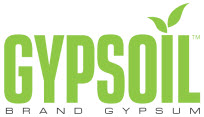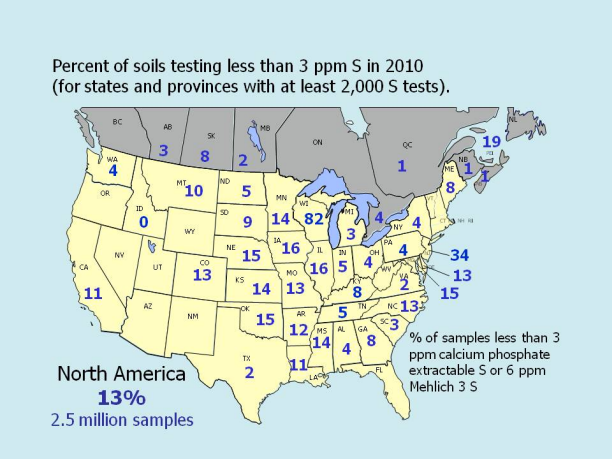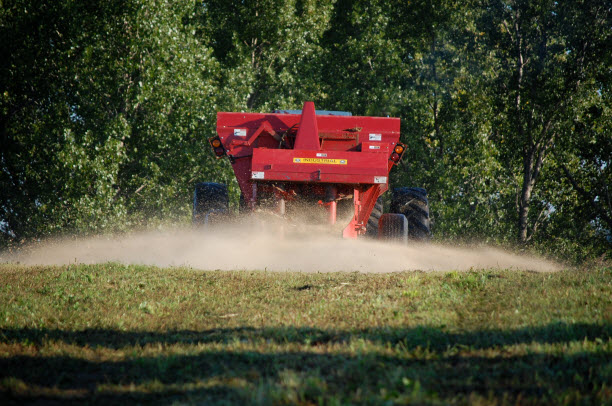News Releases
Media inquiries
Using gypsum to improve soil quality is a popular topic for farm and agricultural inflencer audiences. Please contact our communications consultant Karen Bernick at 1-866-GYPSOIL (497-7645) if you have questions, need story ideas, photos or want to set up interviews with a GYPSOIL team member. GYPSOIL also participates in many national trade shows and meetings including Ag Media Summit, Commodity Classic, National No Tillage Conference and Farm Progress show to name a few.
to improve soil quality is a popular topic for farm and agricultural inflencer audiences. Please contact our communications consultant Karen Bernick at 1-866-GYPSOIL (497-7645) if you have questions, need story ideas, photos or want to set up interviews with a GYPSOIL team member. GYPSOIL also participates in many national trade shows and meetings including Ag Media Summit, Commodity Classic, National No Tillage Conference and Farm Progress show to name a few.
High resolution photos for current news release available here.
Recorded and Powerpoint presentations from the 2014 Midwest Soil Improvement Symposium can be found on the Symposium page.
Highlights from the 2014 press conference at Ohio Farm Science Review.
A collection of general press releases can be found below:
Summary shows 82 percent of Wisconsin soil samples test low in sulfur

FOR IMMEDIATE RELEASE
A 2010 summary by the International Plant Nutrition Institute (IPNI) indicates the incidence of low sulfur levels in soil tests is on the rise. In Wisconsin, 82 percent of the samples tested low (3 ppm or less) in calcium phosphate (extractable) equivalent sulfur. Also last year, University of Wisconsin (UW) researchers found that 64 percent of alfalfa plant tissue samples (of 39 total samples) were low in sulfur, compared to 38 percent in a similar study a decade ago. With scientific evidence to show that gypsum, as a sulfur source, has a positive impact on crop performance, many crop growers are turning to byproduct gypsum to supply sulfur for their crops.
Chicago, IL, (AgPR), October 4, 2011 -- Dairy farmer Scott Stoffel never used to worry much about whether his crops got enough sulfur, an essential macro nutrient for alfalfa, corn and other crops Stoffel grows at his West Bend, WI, farm.
Before environmental regulations restricted sulfur emissions, Mother Nature supplied farm fields with sulfur. “We got sulfur with the rain,” says Stoffel.
Today, many growers like Stoffel in Wisconsin and other states are seeing signs of sulfur deficiencies in alfalfa, corn and other crops.
Last year, researchers at the University of Wisconsin (UW) found that 64 percent of alfalfa plant tissue samples taken (39 total samples) were low in sulfur (.25 percent or less). In a similar study a decade ago, only 38 percent of samples were considered low.1
Summaries released by the International Plant Nutrition Institute (IPNI) in 2010 indicate an increase in frequency in low sulfur levels in soil tests. Overall, 13 percent of the 2.5 million samples tested in 2010 were low (3 ppm or less) in calcium phopshate (extractable) equivalent sulfur compared to only 4 percent in 2005. In Wisconsin, 82 percent of soils tested were considered low in sulfur in the IPNI study. 2 See Figure 1.
“Sulfur is becoming an issue because of the Clean Air Act that required lower emissions from powerplants and other sources,” says Dr. Richard Wolkowski, a senior soil scientist and Extension soil scientist (emeritus) at the UW. “There has been a substantial decrease in sulfur deposition in rainfall.”
Using gypsum for sulfur
One cost-effective and high quality alternative for supplying sulfur, as well as calcium, is FGD or by-product gypsum produced at certain coal-fired utility plants that use scrubbing technology to clean emissions.
“Gypsum is an excellent source of calcium and sulfur for crops,” Wolkowski says.
The Clean Air Act Amendments of 1990 gave rise to new scrubbing systems used by coal-fired utilities to remove sulfur dioxide (SO2) from their emissions. These scrubbers produce high-quality and very pure FGD gypsum or calcium sulfate dihydrate (CaSO4 ? 2H2O). According to utility industry surveys, annual production of FGD gypsum is currently approximately 18 million tons and could double in the next ten years. In addition to FGD gypsum, co-product gypsum is derived from fermenting corn for food products.
FGD gypsum supplies approximately 13-16 percent sulfur and 17-20 percent calcium on a dry weight basis, according to Ron Chamberlain, chief agronomist and founder of GYPSOIL who now serves as director of gypsum programs for Beneficial Reuse Management. In addition to supplying soils with calcium and sulfur, gypsum is also used by many growers as a soil amendment to improve water infiltration, reduce erosion and also keep nutrients like phosphorus from leaching out of the soil.
Stoffel has recently turned to gypsum to aid in fertility and improve soil quality. In March of 2010, Stoffel applied FGD gypsum at a rate of one ton/acre to a fourth-year alfalfa field. Stoffel says he couldn’t believe the difference in his alfalfa field versus other fields after a single gypsum application. The alfalfa crop was, “greener, taller, with more leaves and faster regrowth,” says Stoffel. He says sulfur levels in his feed tests have risen since he started applying gypsum.
Research results
Dr. Warren Dick, a researcher and professor in Environmental and Natural Resources at The Ohio State University, Wooster, OH, has shown that gypsum, used as a sulfur source, raises yields of corn and alfalfa. A 2003 OSU study showed corn responded to gypsum that supplied sulfur at a rate of 30 lbs/acre. Yield was increased from 182 bu./acre to 193.
Dr. Dick has conducted several studies looking at alfalfa response to gypsum. Cumulative 2000-2002 data from OSU shows an 18 percent increase in alfalfa tonnage in gypsum-treated fields vs. the control fields with no gypsum.
“Sulfur is important because it’s a part of protein,” Dr. Dick told the audience of 190 crop consultants, growers and others at the Midwest Soil Improvement Symposium: Research and Practical Insights into Using Gypsum, held August 23, 2011, at the University of Wisconsin Arlington Ag Research Station. “There are two amino acids that require sulfur for protein synthesis and that’s why crops like alfalfa, and maybe soybeans, potentially respond better to gypsum and the sulfur fertilizer inputs because they are very high protein-producing type crops.
“The other thing about alfalfa and soybeans is that the nitrogen-fixing enzyme, nitrogenase, has a very high requirement for sulfur and so the two go together,” Dick said.
Typically, one pound of sulfur is removed from the soil with every 10 pounds of nitrogen that are used to build protein in alfalfa, according to Chamberlain. “As a result, it’s quite critical to replace the sulfur that’s been removed since most soils no longer receive adequate sulfur deposited from the air.”
Chamberlain says that FGD or byproduct gypsum is an ideal sulfur source because it is cost-effective, readily available and easy to apply with bulk spreaders used to apply litter or lime. He says the rate for gypsum application on alfalfa ground is 300-500 lbs/acre. Growers like Stoffel often elect to apply at a higher rate in order to achieve soil amendment benefits as well.
Wolkowski says there are a number of reasons to look at land application of byproduct gypsum. “Applying byproduct gypsum is a good method of recycling. What would normally be landfilled is now being used to supply plant fertility needs.”
“Furthermore, there is evidence to show gypsum has a positive effect on soil properties, and that applications of gypsum may reduce soluble phosphorus losses from the soil. That could be important from an environmental standpoint.”
1 Nutrients to Watch in 2011: Sulfur and Potassium, Laboski et al,Wisconsin Crop Manager newsletter, March 29, 2011.
2 The Fertliity of North American Soils, 2010, Bulletin Summary, International Plant Nutrition Institute, March 2011.
Figure 1

International Plant Nutrition Institute, 2010


